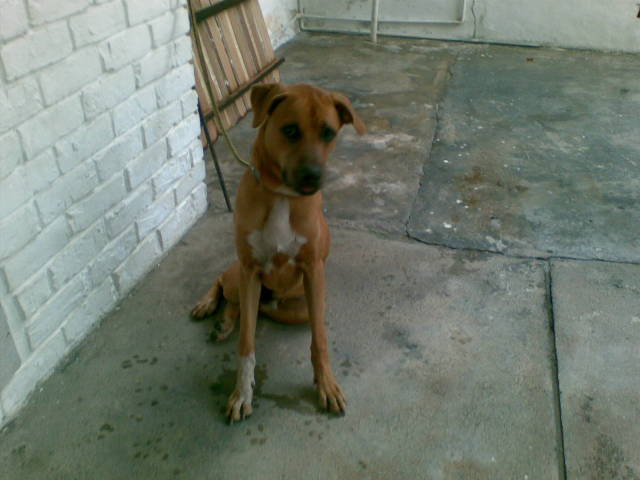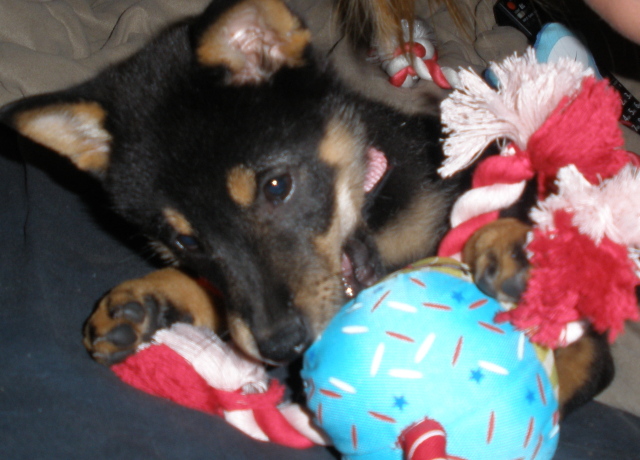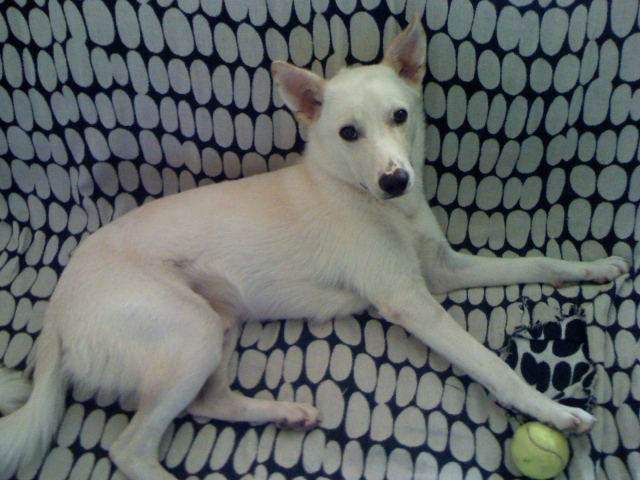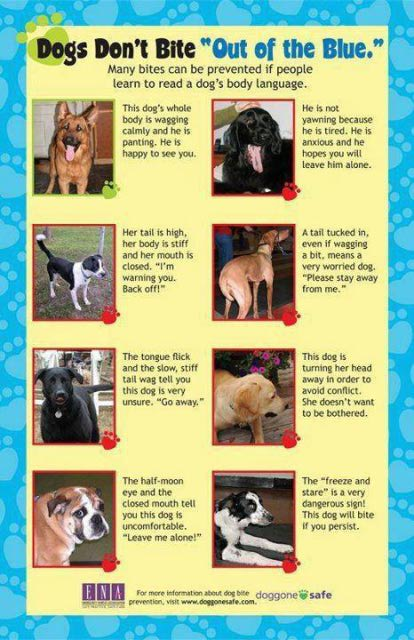QuestionThank you for taking the time to read my email.
We have a 13 y/o male Corgi that we have had for 10 yrs, a 7 y/o female greyhound that we have had for 2 years and just adopted a 10 month old male corgi. All are neutered. I know that this is going to take some time for everyone to get acclimated to the new situation. The old corgi is mostly deaf and puts up with no nonsense from the new one and spends most of his time in a dark, quiet room. The greyhound is VERY sensitive, quiet and passive and the new corgi is driving her INSANE with his constant need to herd her. He will even jump up in the air to snap at her nose. The greyhound just doesn't know what to think, can't lay down for more than a few seconds without being annoyed by the puppy. We try handling the situation with a firm NO but the greyhound things we are telling HER no and you can tell it really bothers her. I am asking this question now so that we know good ways to handle the situation so that the puppy learns his boundaries and the greyhound can rest in peace. The puppy does have a crate that we use only for rest times and sleep. Besides his strong herding instinct he does do things that we want to address now and not wait until it is a more ingrained problem.
My question I guess is what kind of training do we use to get the puppy to stop a behavior that is unacceptable....snapping at the greyhound, jumping up on people, standing on his hind legs to sniff tables and cabinet tops....and not put even more stress on the greyhound. One thing we have been doing is to let him wander around the house but if he starts annoying the greyhound too much we put him on a leash and keep him right next to us until he seems to calm down. Is this a good approach? And what "instantaneous" approach can we take to curb things that we want him to stop IMMEDIATELY like jumping?
I hope I haven't wandered too much and made this question more confusing than it should be.
I should mention that we are the FOURTH owners of this puppy and I'm not sure why he has been passed on so much. I suspect it is his high energy level but he is quite smart, knows sit, and is housetrained and I think he will calm as he becomes more secure and a little older. I hope.
But if you could give me some good basic techniques,Riley, Patsy, Joe, my husband and I will be much happier!
Jane
AnswerI have a 16 year old Whippet whose temperament is much like your Greyhound's. She is extremely hypersensitive and nothing directed at my Toy Poodle can be done in her presence, since she immediately takes it personally! This type of temperament might be called the "omega" in the "pack". Sound aversives for your Corgi (such as conditioned response made to any noisy instrument) is definitely OUT of the question, as your Greyhound will be even more "punished". It's a sticky situation!
Keeping the Corgi on house tab (indoor leash) is a very good idea and can keep him out of a great many situations where he might get into trouble! You might want to extend that leash from the average 6 feet by using a cotton web training lead. These are manufactured in 10 to 30 feet lengths. Now you need to do a great deal of work with that puppy because you are just beginning to see the reasons he's in his FOURTH home!
The best approach is to use positive reinforcement training (not necessarily a clicker, as the sound of the click might frighten the Greyhound!), but definitely use all methods of positive reinforcement training including creating a signal from you to him that what he JUST DID is about to receive a reward. As I often do, I encourage you to visit Karen Pryor's web site to learn about clicker training and then, instead of the clicker, use a VISUAL signal. I often use my finger to my nose. This keeps the dog focused on ME once he makes the connection that finger-to-nose means REWARD for him. Dogs normally watch us a great deal of the time, it's hard wired into their species. This dog will be watching you a great deal MORE and this is good.
Once your dog has been conditioned to your visual cue, begin teaching him simple obedience tricks, such as "sit", but avoid using the normal words for these behaviors as you don't want to cue your other dogs. With him on long house tab, when he begins to bother your greyhound, distract him with a unique sound (this can be anything, clucking your tongue, repeating loudly the phrase "bee bee bee bee bee") and when he stops and looks at you, real him in and give him your new cue for "sit." Reward immediately after your finger to nose cue, and release him from being held closely to you by the house tab. In the meantime, promote your greyhound by petting her FIRST in the puppy's presence, feeding her first, giving her free cookies, etc., so as to attempt to make her feel a bit more confident. This may or may not work as she appears to be a lifelong "omega" but, you never know and it's worth a try. Do NOT tolerate the Corgi's interference with the Greyhound, not for one episode. Do not leave these dogs alone together when you are not home. Confine the pup to one room and allow the other two dogs free run of the house (or confine them to another room).
As for cruising the table and sticking his nose where it does not belong (like the garbage!), this is where you can use an aversive. Remove the other dogs from the room. Leave something on the table that the Corgi might enjoy; put it on a large sheet of paper towels. Behind the article itself, and covered by other paper towels, place three or four empty cans of soda filled with about 8 pennies in each one (crimp cans in the middle so pennies can't fall out.) Leave the Corgi alone in the room with the "bait" and wait for him to reach up to get it. When it comes down, so will the penny cans. Some dogs don't react to this unless they have been conditioned to the sound of the penny can but the Corgi is not generally a breed with that problem. They are normally very sound sensitive. In one second he will learn that taking things from the table (or garbage) can be a "dangerous" behavior. If he runs out of the room or backs quickly away (you must be observing him from another room, mirrors are good for this, you have to be tricky!), you've got an acquired aversion to stealing from the table. You will only need to "set up" the dog one more time in the next few days. If he boldly goes toward the bait anyway and ignores the can, repost and I will teach you how to condition him to an aversive.

 dogs behaviour
QuestionMy 8 months old Dusto
QUESTION: My puppy
dogs behaviour
QuestionMy 8 months old Dusto
QUESTION: My puppy
 Post bladder surgery potty training for INDOORS!
QuestionTiki
QUESTION: Dear Dr. Connor,
My 10 ye
Post bladder surgery potty training for INDOORS!
QuestionTiki
QUESTION: Dear Dr. Connor,
My 10 ye
 My Shiba Inu
Question
Lola
I bought a registered Shiba Inu puppy fro
My Shiba Inu
Question
Lola
I bought a registered Shiba Inu puppy fro
 Dog walking problems
Question
Snickers
I have been trying to train my dog SN
Dog walking problems
Question
Snickers
I have been trying to train my dog SN
 Is this aggression, dominance, or play?
QuestionQUESTION: I have a question regarding doggy beh
Is this aggression, dominance, or play?
QuestionQUESTION: I have a question regarding doggy beh